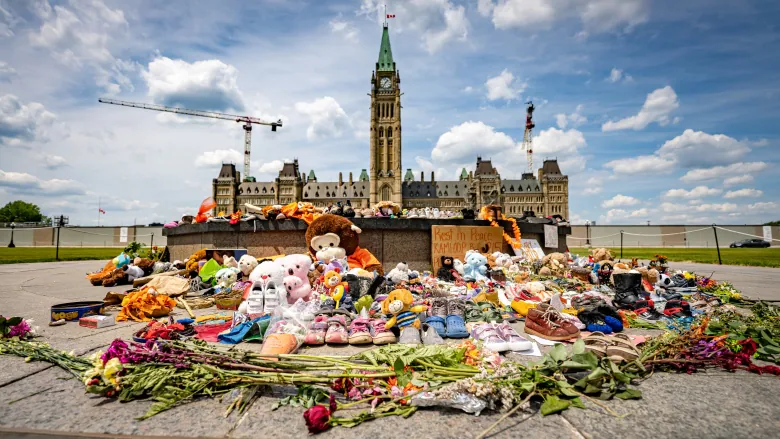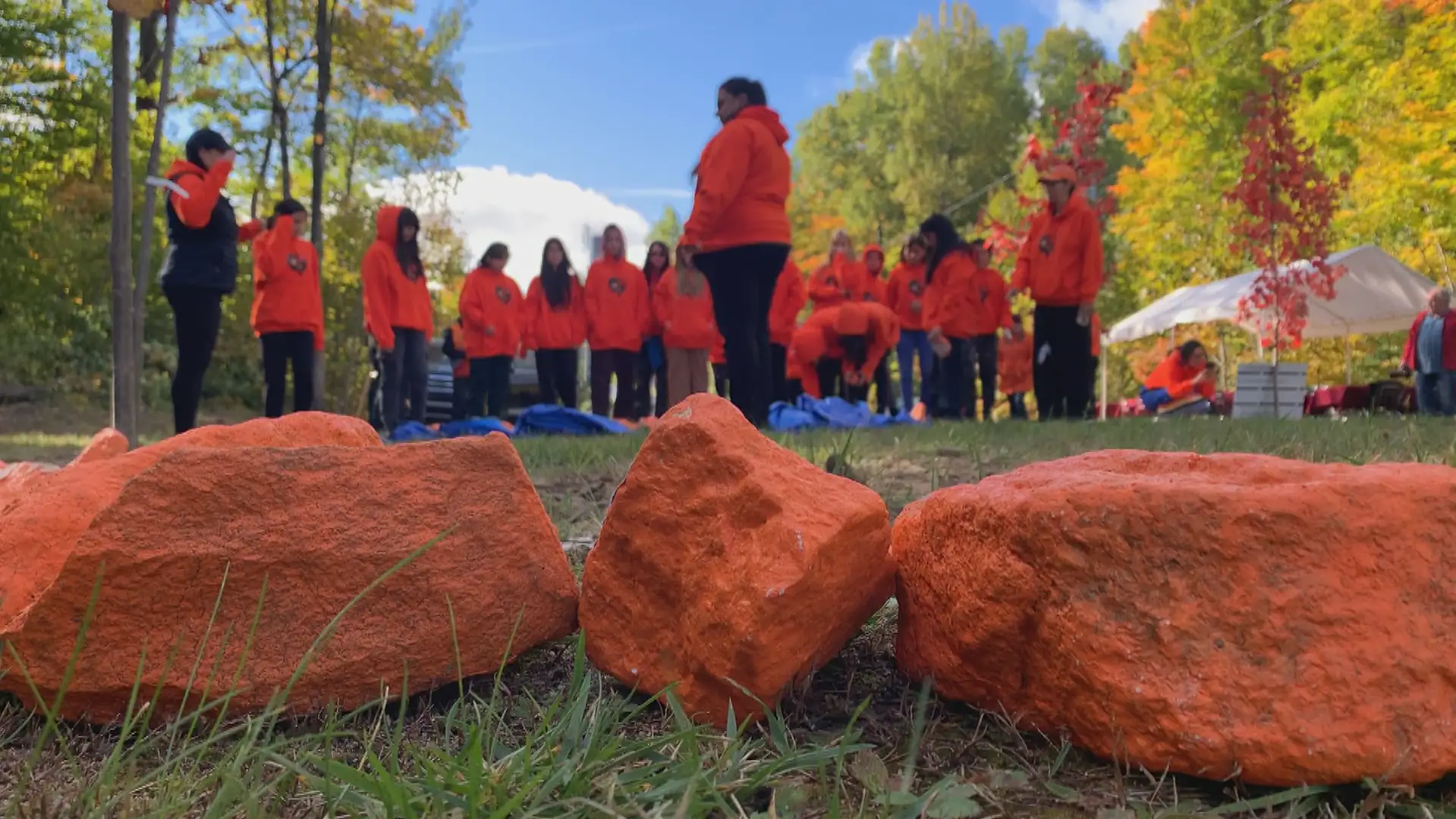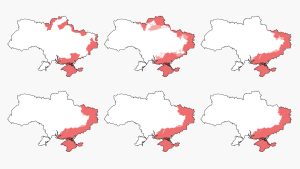A First Nation in western Quebec has made a new home for the shoes that were left on Parliament Hill last year as a memorial to the children who never made it back to their families after being forced to attend Canada’s residential schools.
On Thursday, elders, students and other community members gathered on a hill standing tall above the Grade 1 to 11 school in Kitigan Zibi Anishinābeg, an Algonquin First Nation located 136 kilometres north of Ottawa.
It’s on that steep hill, within a large circle of painted orange stones, that the shoes that accumulated in front of Centre Block were buried inside birch bark baskets marked with local students’ handprints.
After they were removed from Parliament Hill last October with the guidance of Algonquin elders, “they needed a place,” said Alison Commando, a local educator in Kitigan Zibi Anishinābeg. They were buried on the hill this spring.
The Parliament Hill memorial took shape after the Tk’emlúps te Secwépemc First Nation in B.C. announced it had discovered more than 200 suspected burial sites near the former Kamloops residential school.
It was one of several memorials with shoes and children’s toys that appeared across the country, after the discovery sparked a national reckoning involving Canada’s historic and ongoing treatment of Indigenous people.
Jenny Tenasco, a residential school survivor in Kitigan Zibi Anishinābeg, is among the elders who agreed the shoes needed a proper final resting place.
“It’s gonna be another way of respecting the children and part of healing,” she said.
The National Centre for Truth and Reconciliation estimates, based on death records, at least 4,100 children died at residential schools across Canada, and that many were likely buried in unmarked and untended graves at schools or school-related cemeteries.
The true number is likely much higher. Murray Sinclair, the former chair of the Truth and Reconciliation Commission, has said as many as 25,000 children may have died at the schools.

Tenasco was sent to the Cecilia Jeffrey residential school operated by the Presbyterian Church in Kenora, Ont., located nearly 2,000 kilometres away from Kitigan Zibi Anishinābeg.
She recalled the pain she felt while being taken away by bus after having some teeth removed, and the agony of being separated from her older sister by fence.
“We were never allowed to speak our language,” she said. “Those were stolen words.”
A place of ‘resilience’
Commando, the guidance counsellor at Kitigan Zibi Kikinamadinan School — which is connected to the hill site via a walking trail — welcomed class after class to the top of the hill on Thursday. Kids of all ages helped her form the circle of stones.
Commando said the site resonates with her because, unlike the residential schools, where students were stripped of their culture, Kitigan Zibi Kikinamadinan successfully petitioned in the 1970s to take over its own education system.
“I’m glad things have changed. But it should have never been like how it was,” Grade 11 student Mia Chabot said.
Alison Commando, a guidance counsellor at Kitigan Zibi Kikinamadinan School, says the memorial is meant to recognize residential school students while also honouring the resilience of the community.
Commando said her mother, like Tenasco, attended a residential school, and survived.
“Had she been one of those students that didn’t, I wouldn’t exist,” Commando said.
“My son wouldn’t exist. My family wouldn’t exist. Each time more and more remains kept turning up, that’s all I kept thinking was, wow, we could have been kind of just totally killed off as a people, but we [weren’t.]”
Commando hopes the hill site, in addition to serving as a permanent memorial and a meeting place — benches will be added later — also stands as a source of “resilience.”
“It is about honouring them,” she said of residential school students who did not survive, “but I don’t want to traumatize any survivors over and over again to talk about what they went through.”
“Let’s talk about our resilience. Let’s talk about who we are and where we are now. That’s why we have our students involved.”


